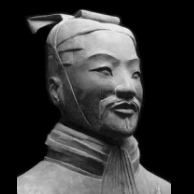Bangkok Administration To Demolish Saphan Taksin Station, Put In Moving Walkways
-
Recently Browsing 0 members
- No registered users viewing this page.
-
Topics
-
-
Popular Contributors
-
-
Latest posts...
-
60
Dubai immigration refuse entry for tattooed Brit, says he will never return
I agree with your rationale. I find it too radical, however it would be interesting to have a conversation with a face-inked person and have their take on things. Definitely agree. -
7
Thanks to Iran Attack, Dangerous Illegals Get a Free Pass. Americans Less Safe
Ask our Air Force and Tech sector. Better to have all those Nobel Prize winners on our side. -
60
Dubai immigration refuse entry for tattooed Brit, says he will never return
Well done Dubai. Disgusting ugly monster. -
19
800k Not In the Bank Method
Agents are cheap. 800k is not needed. 🙂 -
60
Dubai immigration refuse entry for tattooed Brit, says he will never return
They already do. I have several visible tattoos, but facial ones I find very disturbing, IMO there has to be some underlying psychological issue for someone to do something so radical. -
7
Thanks to Iran Attack, Dangerous Illegals Get a Free Pass. Americans Less Safe
And think of all the real Americans who would die because of this. That must be a plus for you. We can benefit from Israeli technology without having to make Americans targets for a foreign country. What has this country done to deserve so much of American taxpayers' money?
-
-
Popular in The Pub









Recommended Posts
Create an account or sign in to comment
You need to be a member in order to leave a comment
Create an account
Sign up for a new account in our community. It's easy!
Register a new accountSign in
Already have an account? Sign in here.
Sign In Now